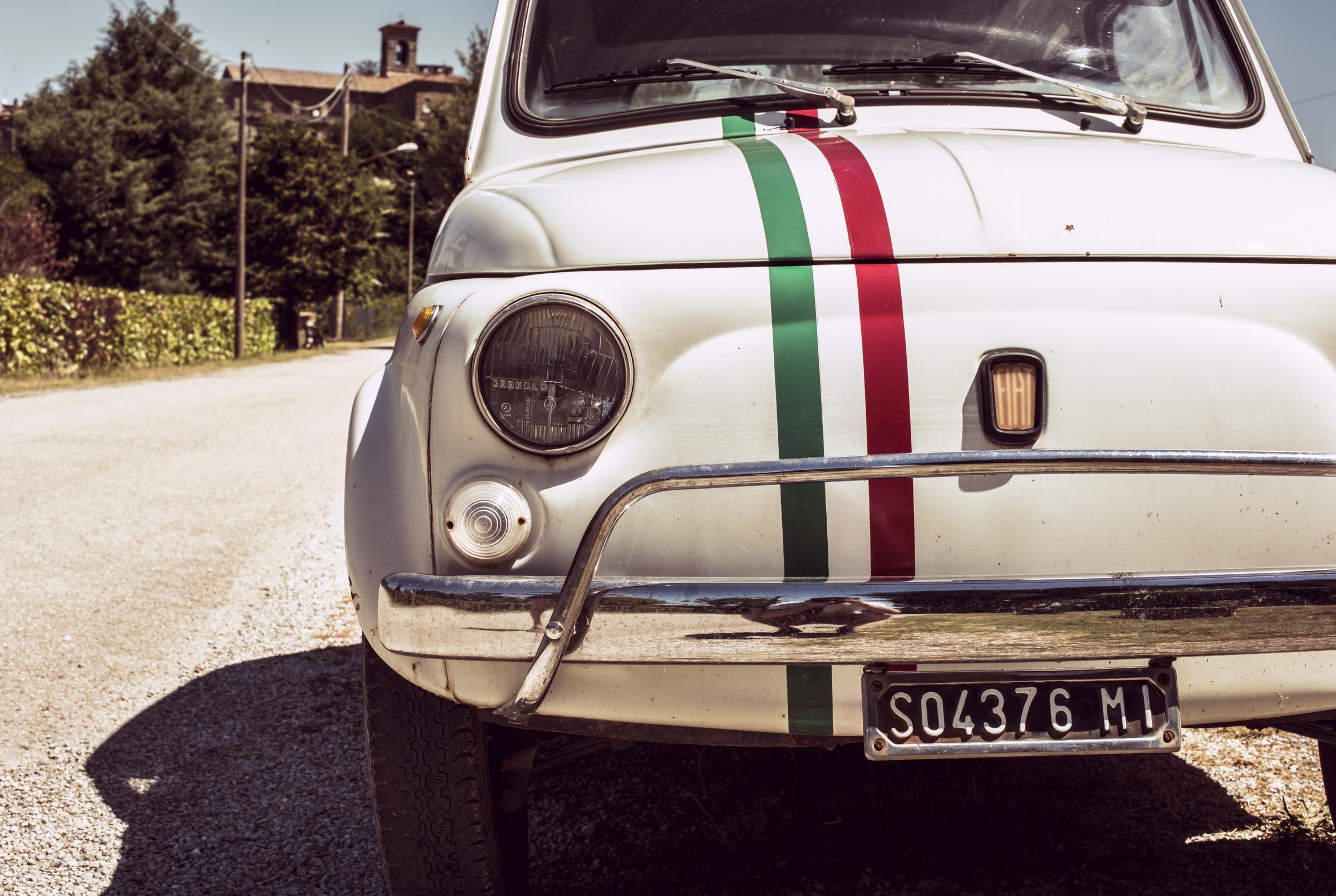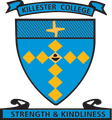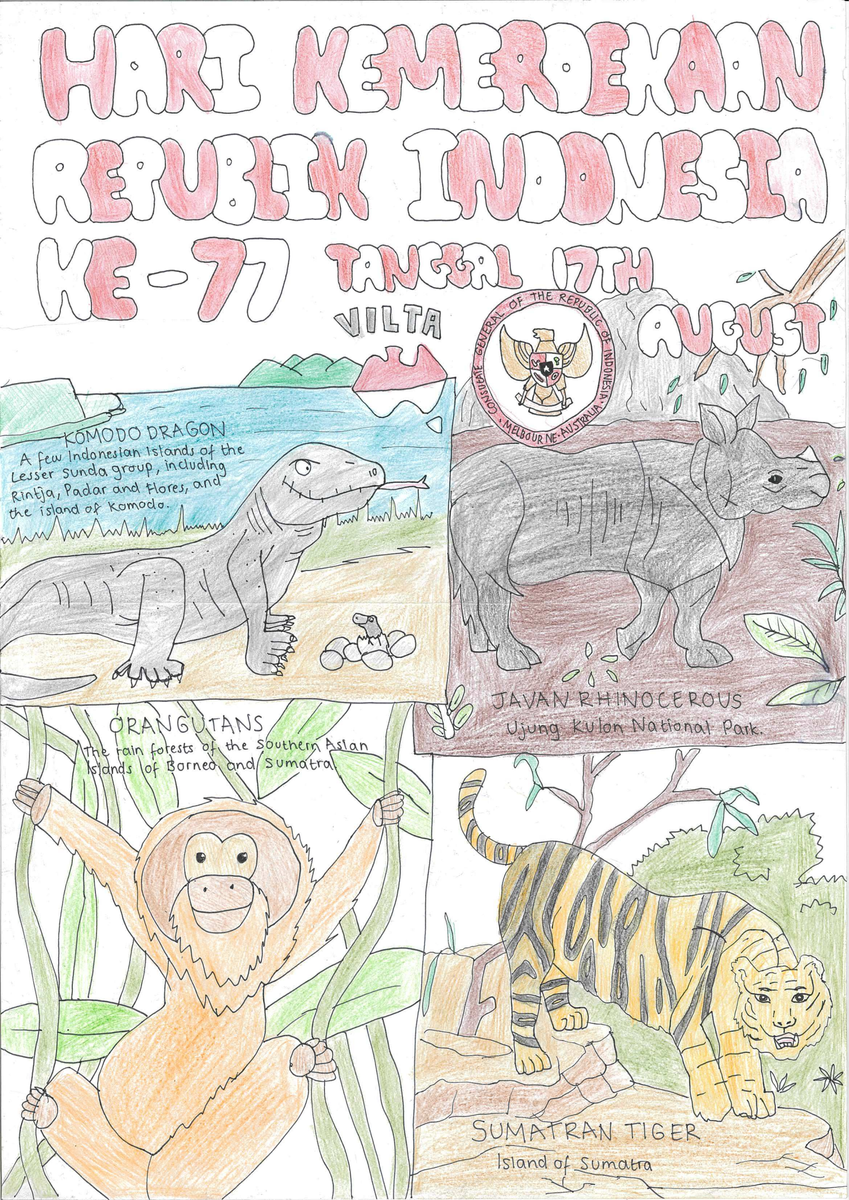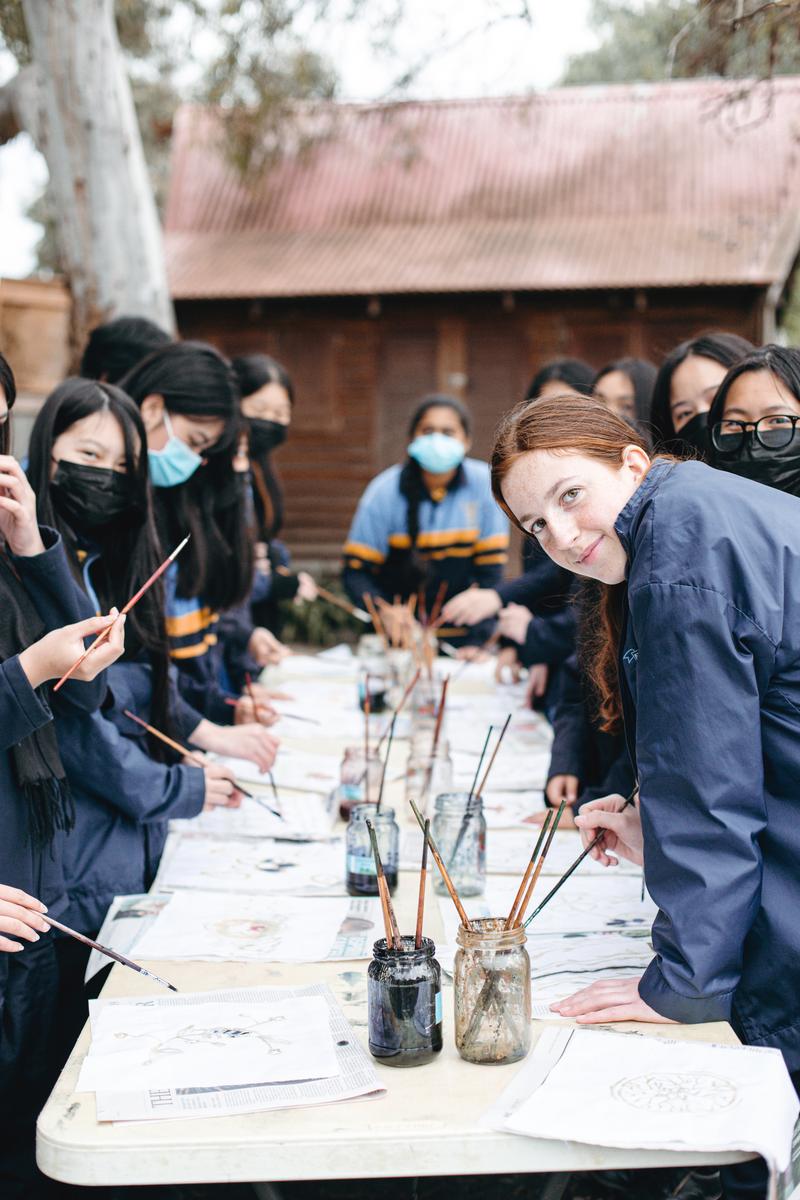LOTE

VILTA Indonesian Independence - Poster Competition 2022
The Year 7 Indonesian students of St Rose, participated in the VILTA (Victorian Indonesian Language Teacher Association) poster competition as part of the Indonesian Independence Day celebration.
Indonesian Independence Day is celebrated on the 17th of August. In 1945, Indonesia was proclaimed independent from the Dutch and Japanese, after 350 years of foreign rule. In the lead up to the day, people clean their streets, houses and decorate them with the Indonesian flag. The date, 17th of August, is often freshly painted across arches and columns that mark the entrance to towns and villages. Every year, on the morning of August 17th, the Declaration of Independence is read at the presidential palace. The reading is followed by a flag-raising ceremony, which is carried out by high school students from across the country.
Participation for the poster competition was high, with around 100 posters from 22 schools throughout Victoria. Students were required to capture Indonesia’s rich diversity beyond the people, culture and ethnicities, learn and discover the fascinating native animals that can only be seen in Indonesia.
Poster judging criteria were as follows:
- depiction of the province of origin/natural habitat of the native animals
- relevance and clarity of Indonesian native animal theme
- soundness of technical content
A big congratulation to Melina Lay who was awarded 1st place, showcasing her creative and artistic skills, along with her knowledge of Indonesia and native Indonesian animals.
Fauly Septiana
Indonesian Teacher
Year 9 Italian Excursion to Museo Italiano, Lygon St & Mediterranean Supermarket 2022
Last Friday 12th August, the Year 9 Italian students went on a knowledge-filled Italian excursion, delving into the Italian culture and cuisine of Lygon Street, Carlton, Co As It Museum (Museo Italiano) and Mediterranean Wholesalers, which is an Italian supermarket in Sydney Road Brunswick. It was a fun experience which gave us the opportunity to learn about the in depth history of Lygon Street and about Italian migrants, with fun activities that were arranged by the Italian teachers.
We firstly went to the Co As It Museo Italiano, where there was a staff-led presentation telling us about Italian migration to Australia after WW2. We saw the first coffee machine brought to Australia, which was pretty cool. We learnt about the sacrifices and difficulty Italians experienced when immigrating to Australia. It was interesting to see how they were treated by Australians when they arrived and how everyone reacted when they introduced many new foods & products to Australia.
Then we got to walk around the museum and answer questions in our booklet. After the museum we had an hour of free time to eat. We ate at Brunetti’s, ordering pizza, pasta and chips. Then we got gelato before we left to go to the Mediterranean Supermarket. The supermarket was very big and crowded with a deli, bakery, a cafe and three aisles of different shapes and sizes of pasta. We answered more questions in our booklet about all the different types of food & products sold there, then we got to walk around and make our own purchases. We bought fresh pasta, pasta sauce, candles, peanut butter and jam. The drive home was pretty with city views. My favourite part of the excursion was Lygon Street and getting to walk around. We would like to thank Prof Gallo for organising this fun and informative excursion for the Year 9 Italian students.
Olivia Sidoti, Estelle Agrapidakis, Valentina Madafferi, Leah Ton, NavyaSrinivasan, Crystelle Mathew, Lovia An Nguyen - Year 9
Lily Gallo
Italian Teacher
Year 9 Ceres IIndonesian Excursion 2022
On the 12th of August the Year 9 students visited the CERES Environmental Centre. There they met two Indonesian hosts, Pak Subik and Bu Di, who taught them about Wayang Kulit and Batik.
Tell us what you learned about Batik making with Bu Di?
We learnt about how Batik was made and how long it takes. It's handmade and you can use a stamp or a tool called canting. It originated from central Java. Batik is made onto pieces of cloth and they use wax and dye to create the Pattern.
What did Pak Subik teach you about Wayang Kulit?
Wayang Kulit means shadow puppets and involves puppets, light and a sheet of fabric. The puppets are made from water buffalos' skin and horns. There are two types of puppets, good and bad, which the puppeteer uses the right hand for the good puppets and the left for the bad ones since in Indonesian culture the right hand is the good hand.
Did you have fun?
It was a good learning experience and it was fun to be involved in activities such as making batik and creating our own shadow puppet performances. We thought it was cool because CERES has its own Indonesian section for us to learn.
Lilian Nguyen and Charlotte Tsan - St Francis
Fauly Septiana
Indonesian Teacher







